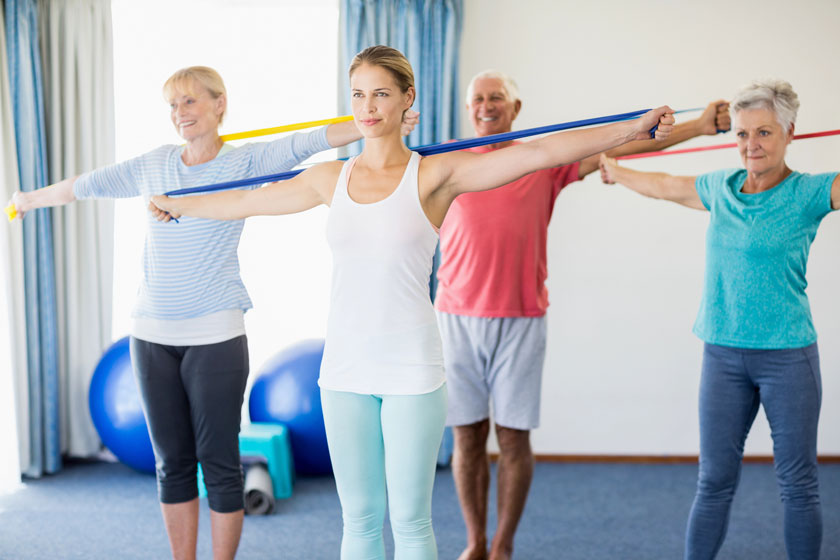Staying active and monitoring physical health is crucial at any age, but it becomes even more significant as people enter their golden years. For individuals residing in or considering senior living options, understanding how to measure fitness levels can greatly contribute to maintaining a vibrant and healthy lifestyle. This blog post will outline simple yet effective ways to assess physical fitness in senior homes, ensuring residents can keep track of their health and well-being with ease.
Introduction to Fitness in Senior Homes
Fitness and health are paramount for maintaining independence and quality of life in senior living. Engaging in regular physical activity can help manage health issues, enhance mobility and improve overall well-being. However, measuring fitness levels can sometimes be a challenge, especially without the right tools and guidelines. This guide aims to demystify the process, providing residents and their families with straightforward strategies to assess fitness progress.
Walk Test for Endurance
One of the simplest ways to measure fitness is through a walk test, which can help evaluate cardiovascular health and endurance. Residents can perform this test by walking a set distance at a comfortable pace and timing the duration. A repeat of the test over weeks or months can provide valuable insights into endurance improvements or needs for adjustments in physical activity plans.
Strength Evaluation with Chair Stands
Strength is a critical component of physical fitness, especially for maintaining mobility and independence. The chair stand test involves counting how many times an individual can stand up from a seated position in 30 seconds. This exercise not only serves as a fitness measurement but also strengthens leg muscles, contributing to better stability and lower fall risk.
Flexibility Test Using Reach Assessment
Flexibility decreases with age, impacting daily activities and increasing the risk of injuries. A simple reach test, where individuals attempt to touch their toes while seated or standing, can indicate flexibility levels. Tracking progress in how close one gets to touching their toes or surpassing previous reach distances can highlight improvements in flexibility over time.
Balance Check with Stand-on-One-Foot Test
Balance is essential for preventing falls, a common concern in older adults. A straightforward way to assess balance is by timing how long an individual can stand on one foot without support. As balance improves, the duration should increase, indicating stronger leg muscles and enhanced stability.
Monitoring Heart Rate Response to Exercise
Heart rate is a vital indicator of cardiovascular fitness. Monitoring how quickly the heart rate returns to normal after exercise can provide insights into heart health and endurance. A slower return to resting heart rate may indicate a need for gradual increases in cardiovascular activities, while quicker recovery times suggest improving fitness levels.
Tracking Activity Levels with Pedometers or Fitness Trackers
Wearable technology like pedometers and fitness trackers are invaluable tools for measuring physical activity. Setting daily steps or activity goals and monitoring progress can motivate residents to stay active and achieve their fitness objectives.
Regular Health and Fitness Assessments
While the methods above offer great ways to self-assess, regular check-ins with healthcare professionals can provide a more comprehensive understanding of physical fitness. These assessments might include more detailed tests and evaluations to tailor exercise programs to individual health needs and goals.
Maintaining fitness is crucial for enhancing the quality of life, particularly for those in senior living. By utilizing simple tests and tools to measure fitness levels, individuals can stay informed about their health and make adjustments to their physical activity routines as necessary. Remember, the goal is not to compete with others but to ensure a personal journey towards health and well-being is on the right track. Encouraging a culture of fitness and health within these communities can lead to happier, more active and more fulfilling lives for all residents.
This approach to fitness in golden environments not only fosters a community of health and wellness but also empowers residents to take control of their physical well-being. By integrating these easy measurement techniques, residents can achieve and maintain optimal fitness levels, contributing to a more vibrant and independent lifestyle.
At our retirement community, we offer an active and independent living community designed to support and enrich the lives of our residents. Our commitment to quality service is reflected in our wide range of lifestyle programs, which include everything from restaurant-quality dining to social activities and events tailored for engagement and enjoyment.
With over 20 years of experience, we understand the importance of a balanced and fulfilling lifestyle, providing exclusive recreational, educational and health programs. We ensure that our residents have access to well-appointed suites or spacious apartments, all within a caring and supportive environment. Our aim is to make every day special and fulfilling, making us a premier choice for those looking for an exceptional standard of living.







